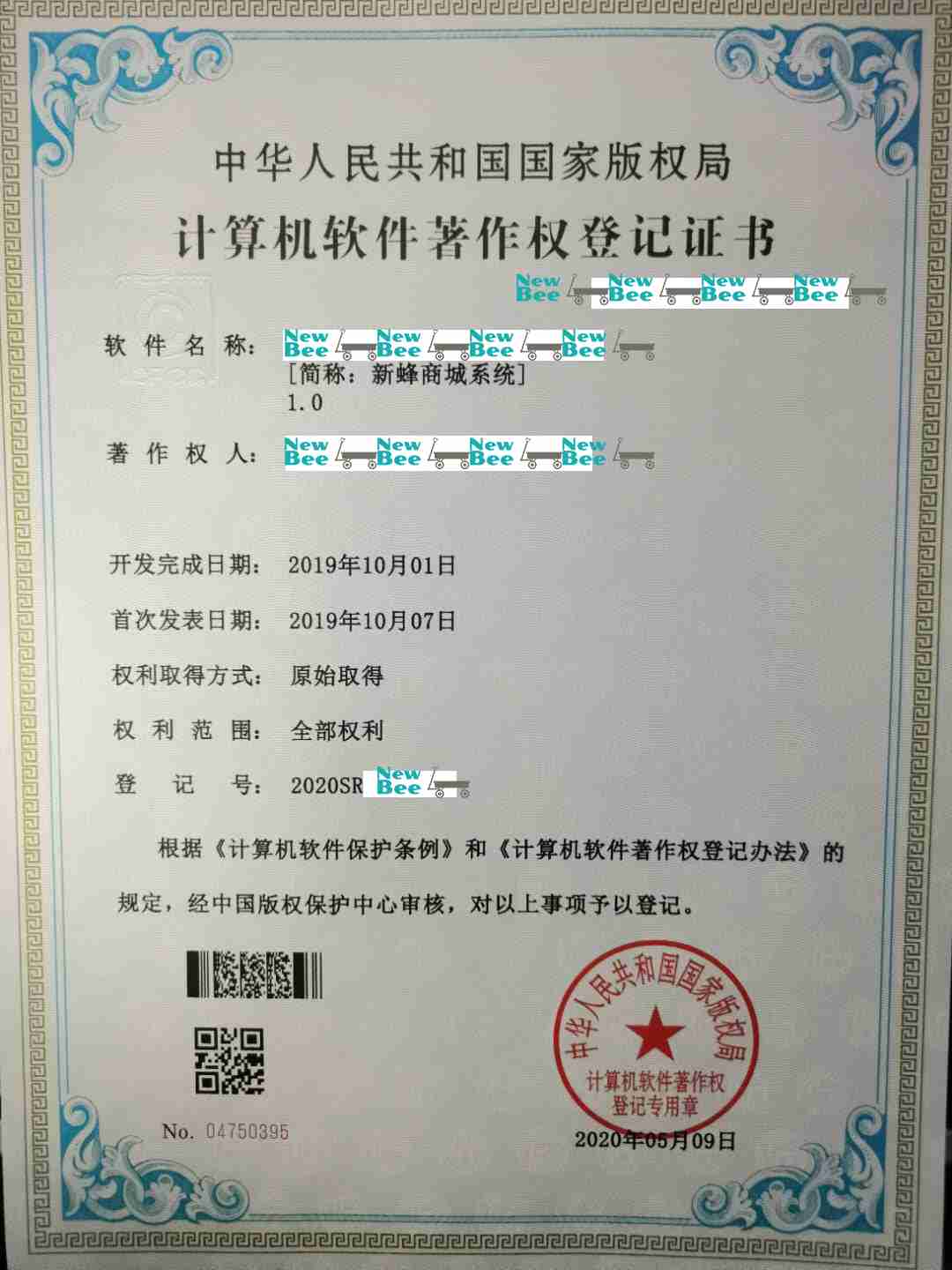 vue3-admin
vue3-admin
🔥 🎉Vue 3 + Vite 2 + Vue-Router 4 + Element-Plus + Echarts 5 + Axios 开发的后台管理系统
Top Related Projects
:tada: A magical vue admin https://panjiachen.github.io/vue-element-admin
🎉 vue admin,vue3 admin,vue3.0 admin,vue后台管理,vue-admin,vue3.0-admin,admin,vue-admin,vue-element-admin,ant-design,vab admin pro,vab admin plus,vue admin plus,vue admin pro
A modern vue admin panel built with Vue3, Shadcn UI, Vite, TypeScript, and Monorepo. It's fast!
Vue3、Element Plus、typescript后台管理系统
A admin template based on vue + element-ui. 基于vue + element-ui的后台管理系统基于 vue + element-ui 的后台管理系统
Naive Ui Admin 是一款基于 Vue3、Vite3 和 TypeScript 的先进中后台解决方案,集成了前沿的前端技术栈和典型业务模型。它拥有二次封装组件、动态菜单、权限校验、粒子化权限控制等核心功能,旨在帮助企业快速构建高质量的中后台项目。无论在新技术运用或业务实践层面,都能为您提供有力支持,并将持续更新,以满足您不断变化的需求
Quick Overview
Vue3-admin is a modern, open-source admin dashboard template built with Vue 3, TypeScript, and Vite. It provides a clean and responsive user interface for building administrative panels, featuring a variety of pre-built components and layouts.
Pros
- Built with Vue 3 and TypeScript, offering improved performance and type safety
- Uses Vite as the build tool, resulting in faster development and build times
- Includes a wide range of pre-built components and layouts for rapid development
- Responsive design that works well on desktop and mobile devices
Cons
- Limited documentation, which may make it challenging for beginners to get started
- Fewer third-party integrations compared to some more established admin templates
- May require additional customization for specific use cases or complex applications
Code Examples
- Using the Table component:
<template>
<el-table :data="tableData" style="width: 100%">
<el-table-column prop="date" label="Date" width="180" />
<el-table-column prop="name" label="Name" width="180" />
<el-table-column prop="address" label="Address" />
</el-table>
</template>
<script setup lang="ts">
const tableData = [
{
date: '2023-05-03',
name: 'John Doe',
address: '123 Main St, City, Country'
},
// ... more data
]
</script>
- Implementing a form with validation:
<template>
<el-form :model="form" :rules="rules" ref="formRef">
<el-form-item label="Name" prop="name">
<el-input v-model="form.name"></el-input>
</el-form-item>
<el-form-item label="Email" prop="email">
<el-input v-model="form.email"></el-input>
</el-form-item>
<el-form-item>
<el-button type="primary" @click="submitForm">Submit</el-button>
</el-form-item>
</el-form>
</template>
<script setup lang="ts">
import { reactive, ref } from 'vue'
import type { FormInstance, FormRules } from 'element-plus'
const formRef = ref<FormInstance>()
const form = reactive({
name: '',
email: ''
})
const rules: FormRules = {
name: [{ required: true, message: 'Please input name', trigger: 'blur' }],
email: [{ required: true, type: 'email', message: 'Please input valid email', trigger: 'blur' }]
}
const submitForm = async () => {
if (!formRef.value) return
await formRef.value.validate((valid, fields) => {
if (valid) {
console.log('Submit:', form)
} else {
console.log('Error submit:', fields)
}
})
}
</script>
- Creating a custom chart using ECharts:
<template>
<div ref="chartRef" style="width: 100%; height: 400px;"></div>
</template>
<script setup lang="ts">
import { ref, onMounted } from 'vue'
import * as echarts from 'echarts'
const chartRef = ref<HTMLElement>()
onMounted(() => {
if (chartRef.value) {
const chart = echarts.init(chartRef.value)
chart.setOption({
title: { text: 'Sample Chart' },
xAxis: { type: 'category', data: ['Mon', 'Tue', 'Wed', 'Thu', 'Fri', 'Sat', 'Sun'] },
yAxis: { type: 'value' },
series: [{ data: [120, 200, 150, 80, 70, 110, 130], type: 'bar' }]
})
}
})
</script
Competitor Comparisons
:tada: A magical vue admin https://panjiachen.github.io/vue-element-admin
Pros of vue-element-admin
- More mature and widely adopted project with a larger community
- Extensive documentation and examples available
- Comprehensive set of pre-built components and features
Cons of vue-element-admin
- Based on Vue 2, which may become outdated as Vue 3 gains popularity
- Steeper learning curve due to its extensive feature set
- Potentially heavier and more complex for simpler projects
Code Comparison
vue-element-admin (Vue 2):
import Vue from 'vue'
import App from './App.vue'
import router from './router'
import store from './store'
Vue.config.productionTip = false
new Vue({
router,
store,
render: h => h(App)
}).$mount('#app')
vue3-admin (Vue 3):
import { createApp } from 'vue'
import App from './App.vue'
import router from './router'
import store from './store'
createApp(App).use(router).use(store).mount('#app')
The main difference in the code snippets is the use of Vue 3's composition API in vue3-admin, which provides a more concise way to create and configure the Vue application. vue-element-admin uses the Vue 2 syntax, which is more verbose but still widely used and supported.
🎉 vue admin,vue3 admin,vue3.0 admin,vue后台管理,vue-admin,vue3.0-admin,admin,vue-admin,vue-element-admin,ant-design,vab admin pro,vab admin plus,vue admin plus,vue admin pro
Pros of vue-admin-better
- More comprehensive documentation and examples
- Wider range of pre-built components and layouts
- Active community support and regular updates
Cons of vue-admin-better
- Steeper learning curve due to more complex architecture
- Potentially heavier bundle size with additional features
- May require more configuration for simpler projects
Code Comparison
vue-admin-better:
<template>
<vab-layout>
<vab-sidebar />
<vab-main>
<router-view />
</vab-main>
</vab-layout>
</template>
vue3-admin:
<template>
<el-container>
<el-aside>
<sidebar />
</el-aside>
<el-main>
<router-view />
</el-main>
</el-container>
</template>
The code comparison shows that vue-admin-better uses custom components for layout structure, while vue3-admin relies more on Element Plus components. This reflects vue-admin-better's more customized approach, which can offer greater flexibility but may require more familiarity with the project's specific components.
Both projects provide solid foundations for building Vue.js admin interfaces, with vue-admin-better offering more features and customization options at the cost of increased complexity, while vue3-admin provides a simpler, more straightforward approach that may be easier for beginners to grasp and implement quickly.
A modern vue admin panel built with Vue3, Shadcn UI, Vite, TypeScript, and Monorepo. It's fast!
Pros of vue-vben-admin
- More comprehensive and feature-rich, offering a wider range of components and utilities
- Better TypeScript support and integration
- More active development and frequent updates
Cons of vue-vben-admin
- Steeper learning curve due to its complexity and extensive features
- Potentially heavier and more resource-intensive for smaller projects
- May require more configuration and customization for specific use cases
Code Comparison
vue-vben-admin:
import { defineComponent } from 'vue';
import { BasicForm, useForm } from '/@/components/Form';
import { BasicTable, useTable } from '/@/components/Table';
import { getBasicColumns, getFormConfig } from './tableData';
export default defineComponent({
// ... component logic
});
vue3-admin:
<template>
<div class="table-container">
<el-table :data="tableData" style="width: 100%">
<el-table-column prop="date" label="Date" width="180" />
<el-table-column prop="name" label="Name" width="180" />
<el-table-column prop="address" label="Address" />
</el-table>
</div>
</template>
<script>
// ... component logic
</script>
The code comparison shows that vue-vben-admin uses more advanced TypeScript features and custom components, while vue3-admin relies on simpler Vue 3 template syntax and Element Plus components. vue-vben-admin's approach offers more flexibility and type safety, but may require more setup and understanding of the framework.
Vue3、Element Plus、typescript后台管理系统
Pros of vue-manage-system
- More comprehensive documentation, including detailed setup instructions and feature explanations
- Wider range of UI components and layouts, offering greater flexibility for developers
- Active community support with regular updates and issue resolutions
Cons of vue-manage-system
- Uses Vue 2, which may be considered outdated compared to Vue 3 used in vue3-admin
- Larger bundle size due to inclusion of more features and dependencies
- Steeper learning curve for beginners due to its extensive feature set
Code Comparison
vue-manage-system (Vue 2):
import Vue from 'vue';
import App from './App.vue';
import router from './router';
import store from './store';
Vue.config.productionTip = false;
new Vue({
router,
store,
render: h => h(App)
}).$mount('#app');
vue3-admin (Vue 3):
import { createApp } from 'vue';
import App from './App.vue';
import router from './router';
import store from './store';
const app = createApp(App);
app.use(router);
app.use(store);
app.mount('#app');
The main difference in the code snippets is the setup process, reflecting the transition from Vue 2 to Vue 3. vue3-admin uses the new createApp function, while vue-manage-system uses the Vue 2 constructor.
A admin template based on vue + element-ui. 基于vue + element-ui的后台管理系统基于 vue + element-ui 的后台管理系统
Pros of vue2-manage
- Built with Vue 2, which has a larger ecosystem and more established best practices
- Includes a wider range of pre-built components and features
- More comprehensive documentation and examples
Cons of vue2-manage
- Uses older Vue 2 syntax, which may become outdated as Vue 3 gains adoption
- Less performant compared to Vue 3's improved reactivity system
- May lack some of the newer features and improvements introduced in Vue 3
Code Comparison
vue2-manage (Vue 2 syntax):
export default {
data() {
return {
message: 'Hello Vue 2'
}
},
methods: {
greet() {
console.log(this.message)
}
}
}
vue3-admin (Vue 3 Composition API):
import { ref } from 'vue'
export default {
setup() {
const message = ref('Hello Vue 3')
const greet = () => {
console.log(message.value)
}
return { message, greet }
}
}
The main difference in the code examples is the use of the Composition API in vue3-admin, which offers a more flexible and reusable approach to organizing component logic compared to the Options API used in vue2-manage.
Naive Ui Admin 是一款基于 Vue3、Vite3 和 TypeScript 的先进中后台解决方案,集成了前沿的前端技术栈和典型业务模型。它拥��有二次封装组件、动态菜单、权限校验、粒子化权限控制等核心功能,旨在帮助企业快速构建高质量的中后台项目。无论在新技术运用或业务实践层面,都能为您提供有力支持,并将持续更新,以满足您不断变化的需求
Pros of naive-ui-admin
- Uses Naive UI, a Vue 3 component library with a modern design and extensive customization options
- Implements a more comprehensive role-based access control system
- Offers a wider range of pre-built components and layouts
Cons of naive-ui-admin
- Less focused on e-commerce specific features compared to vue3-admin
- May have a steeper learning curve due to its more complex architecture
- Smaller community and potentially less frequent updates
Code Comparison
naive-ui-admin uses the Naive UI component library:
<template>
<n-button type="primary" @click="handleClick">
Click me
</n-button>
</template>
vue3-admin uses Element Plus components:
<template>
<el-button type="primary" @click="handleClick">
Click me
</el-button>
</template>
Both projects use Vue 3 and TypeScript, but naive-ui-admin tends to have more complex component structures and state management implementations. vue3-admin focuses more on simplicity and ease of use for e-commerce applications, while naive-ui-admin provides a more general-purpose admin template with advanced features and customization options.
Convert  designs to code with AI
designs to code with AI

Introducing Visual Copilot: A new AI model to turn Figma designs to high quality code using your components.
Try Visual CopilotREADME
vue3-admin
Vue3 + Vite + Vue-Router + Element-Plus + Echarts + Axios åå°ç®¡çç³»ç»ã

newbee-mall 项ç®æ¯ä¸å¥çµåç³»ç»ï¼åºäº Spring Boot å Vue 以åç¸å ³ææ¯æ å¼åã åå°ååç³»ç»å å«é¦é¡µé¨æ·ãåååç±»ãæ°åä¸çº¿ãé¦é¡µè½®æãååæ¨èãååæç´¢ãååå±ç¤ºãè´ç©è½¦ã订åç»ç®ã订åæµç¨ã个人订å管çãä¼åä¸å¿ã帮å©ä¸å¿ç模åã åå°ç®¡çç³»ç»å å«æ°æ®é¢æ¿ãè½®æå¾ç®¡çãåå管çã订å管çãä¼å管çãå类管çã设置ç模åã
vue3-admin çæ¬çº¿ä¸é¢è§å°åï¼http://vue3-admin.newbee.ltdï¼æµè¯è´¦å·å¯ç ï¼admin 123456
newbee-mall ï¼æ°èååï¼ç³»å项ç®æ¦è§

| 项ç®å称 | ä»åºå°å | å¤æ³¨ |
|---|---|---|
| newbee-mall | newbee-mall in GitHub newbee-mall in Gitee | åå§çæ¬ãSpring BootãThymeleafãMyBatisãMySQL |
| newbee-mall-plus | newbee-mall-plus in GitHub newbee-mall-plus in Gitee | å级çæ¬ãä¼æ å¸ãç§æãæ¯ä»ãSpring BootãThymeleafãMyBatisãMySQLãRedis |
| newbee-mall-cloud | newbee-mall-cloud in GitHub newbee-mall-cloud in Gitee | å¾®æå¡çæ¬ãåå¸å¼äºå¡ãSpring Cloud AlibabaãNacosãSentinelãOpenFeignãSeata |
| newbee-mall-api | newbee-mall-api in GitHub newbee-mall-api in Gitee | åå端å离ãSpring BootãMyBatisãSwaggerãMySQL |
| newbee-mall-api-go | newbee-mall-api-go in GitHub newbee-mall-api-go in Gitee | åå端å离ãGoãGinãMySQL |
| newbee-mall-vue-app | newbee-mall-vue-app in GitHub newbee-mall-vue-app in Gitee | åå端å离ãVue2ãVant |
| newbee-mall-vue3-app | newbee-mall-vue3-app in GitHub newbee-mall-vue3-app in Gitee | åå端å离ãVue3ãVue-Router4ãPiniaãVant4 |
| vue3-admin | vue3-admin in GitHub vue3-admin in Gitee | åå端å离ãVue3ãElement-PlusãVue-Router4ãVite |
åæä¸æï¼å¦æè§å¾é¡¹ç®è¿ä¸éçè¯å¯ä»¥ç»é¡¹ç®ä¸ä¸ª Star å§ï¼ä¹æ¯å¯¹æä¸ç´æ´æ°ä»£ç çä¸ç§é¼å±å¦ï¼è°¢è°¢åä½çæ¯æã
å¼ååé¨ç½²ææ¡£
- å¼ç¯è¯ï¼éå ³ Vue3 ä¼ä¸çº§é¡¹ç®å¼åï¼åèå èªå¿«äººä¸æ¥
- 项ç®é¡»ç¥å课ç¨çº¦å®
- 大å¿æè¶ï¼âåå端å离âå¼å模å¼
- Vue3 ç®ä»åå¼åç¯å¢æ建
- Vue3 ç»å API å ¥å£ Setup æµ æ
- Vue3 ä¹ååºå¼ç³»ç» API
- Vue3 ä¹çå½å¨æé©åå½æ°ãæä¾æ³¨å ¥
- Vue3 æ§è½åä¸å¡å±é¢ä¸çæå
- Vite2 åçåæåç®åæ件ç¼å
- Vue-Router4 使ç¨æ¹æ³åè·¯ç±åç
- Vue3 å®æ项ç®å¯å¨ç¯
- å端 API å¼åææ¯éåä¹ Spring Boot
- å端åºç¡è¿è¡ç¯å¢åå¼åå·¥å ·åå¤
- Spring Boot 项ç®æ建åå¿«éä¸æ
- Spring Boot å®è·µä¹ Web åè½å¼å
- Spring Boot å®è·µä¹æ件ä¸ä¼ å¤ç
- Spring Boot å®è·µä¹æ´å MyBatis æä½æ°æ®åº
- Spring Boot å®è·µä¹æ´å Lombok
- Spring Boot å®è·µä¹æ´å Swagger çææ¥å£ææ¡£
- å端 API 项ç®å¯å¨åè¿è¡æ³¨æäºé¡¹
- æ¥å£åæ°å¤çåç»ä¸ååºç»æ
- API æ¥å£å¼åå®æä¹ç¨æ·ç»å½æ¥å£å¼å
- API æ¥å£å¼åå®æä¹ç¨æ·èº«ä»½è®¤è¯è¯¦è§£
- API æ¥å£å¼åå®æä¹è½®æå¾ç®¡ç模åæ¥å£å¼å
- API æ¥å£å¼åå®æä¹ååå类管ç模åæ¥å£å¼å
- API æ¥å£å¼åå®æä¹åå管ç模åæ¥å£å¼å
- API æ¥å£å¼åå®æä¹ååé 置管ç模åæ¥å£å¼å
- API æ¥å£å¼åå®æä¹è®¢å管ç模åæ¥å£å¼å
- åå端é´æçåç§æ¹å¼
- Vite2 + Vue3 + Element-Plus æ建管çåå°é¡¹ç®
- Vue3 å®æä¹ç®¡çåå°å·¦å³æ ç®å¸å±
- Vue3 å®æä¹ç»å½é´æ
- Vue3 å®æä¹é¦é¡µå¤§çæ°æ®
- Vue3 å®æä¹é¦é¡µé ç½®
- Vue3 å®æä¹å类管ç
- Vue3 å®æä¹åå管ç
- Vue3 å®æä¹è®¢å管ç
- Vue3 å®æä¹ä¼å管çãè´¦æ·ä¿®æ¹
- pm2 å®ç°ä¸é®é¨ç½²äºç«¯æå¡å¨
- 常è§é®é¢æ±æ»è®²è§£
èç³»ä½è
大家æä»»ä½é®é¢æè 建议é½å¯ä»¥å¨ issues ä¸åé¦ç»æï¼æä¼æ ¢æ ¢å®åè¿ä¸ªé¡¹ç®ã
- æçé®ç®±ï¼2449207463@qq.com
- QQææ¯äº¤æµç¾¤ï¼707779034 932227898 552142710
å ³æ³¨å ¬ä¼å·ï¼ç¨åºååä¸ï¼åå¤"å¾æ"è¿ç¾¤äº¤æµã

软件èä½æ
æ¬ç³»ç»å·²ç³è¯·è½¯ä»¶èä½æï¼åå½å®¶çæå±ç¥è¯äº§æ以åå½å®¶è®¡ç®æºè½¯ä»¶èä½æä¿æ¤ï¼

页é¢å±ç¤º
以ä¸ä¸º vue3-admin ç³»ç»çé¨å页é¢é¢è§å¾ï¼

æè°¢
æå©
å ¨é¨æèµ ï¼å°ç¨äºåç»çå¼æºé¡¹ç®åæå¡å¨çå¼é
| æ¯ä»å® | 微信æ¯ä» | QQé±å |
|---|---|---|
 |  |  |
Top Related Projects
:tada: A magical vue admin https://panjiachen.github.io/vue-element-admin
🎉 vue admin,vue3 admin,vue3.0 admin,vue后台管理,vue-admin,vue3.0-admin,admin,vue-admin,vue-element-admin,ant-design,vab admin pro,vab admin plus,vue admin plus,vue admin pro
A modern vue admin panel built with Vue3, Shadcn UI, Vite, TypeScript, and Monorepo. It's fast!
Vue3、Element Plus、typescript后台管理系统
A admin template based on vue + element-ui. 基于vue + element-ui的后台管理系统基于 vue + element-ui 的后台管��理系统
Naive Ui Admin 是一款基于 Vue3、Vite3 和 TypeScript 的先进中后台解决方案,集成了前沿的前端技术栈和典型业务模型。它拥有二次封装组件、动态菜单、权限校验、粒子化权限控制等核心功能,旨在帮助企业快速构建高质量的中后台项目。无论在新技术运用或业务实践层面,都能为您提供有力支持,并将持续更新,以满足您不断变化的需求
Convert  designs to code with AI
designs to code with AI

Introducing Visual Copilot: A new AI model to turn Figma designs to high quality code using your components.
Try Visual Copilot

